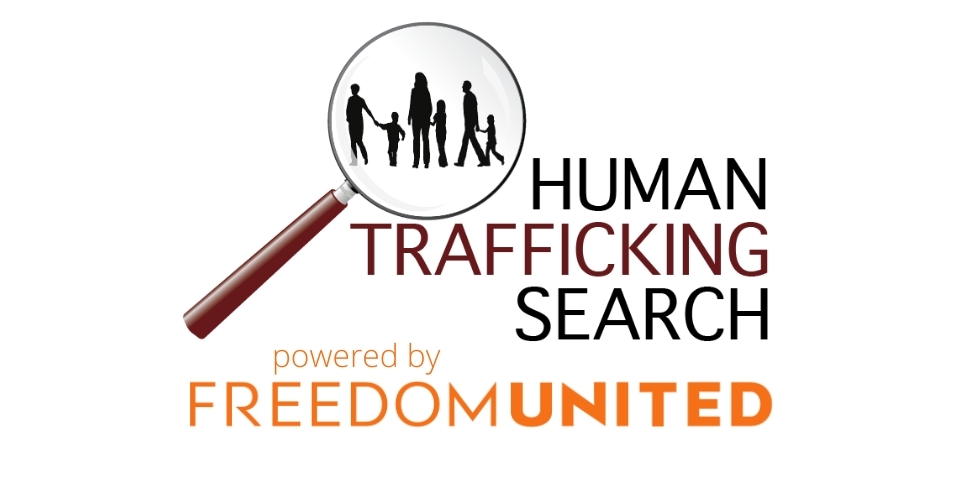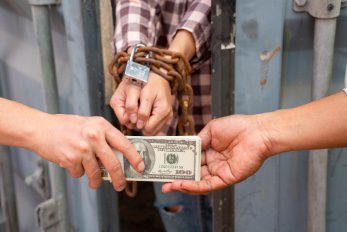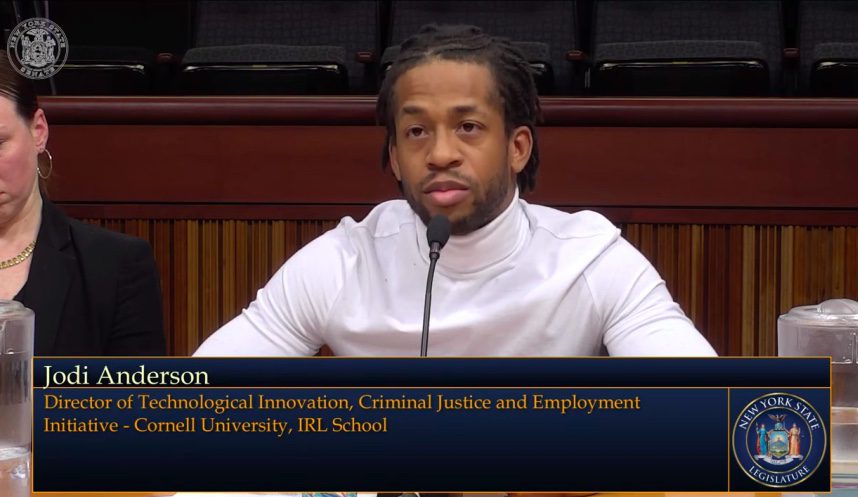
Did you know that human trafficking is the second-largest criminal enterprise across the globe? Or that roughly half a million people inside the U.S. are currently living in conditions of forced labor? Because labor trafficking isn’t given as much attention in the media as sex trafficking and other forms of modern slavery it can be easy to ignore. But it’s more widespread than sex trafficking and could be happening right in front of your eyes.
Traffickers tend to target people in desperate circumstances who have no safety net, like workers on temporary visas, undocumented workers, people experiencing economic hardship or without housing and people with a substance abuse disorder.
And labor trafficking isn’t just a foreign atrocity taking place overseas— it is very much an issue happening here in the U.S.. Migrant agricultural workers in North Carolina were recently awarded $150,000 as their employer had withheld their wages, threatened them with deportation if they fled, and even assaulted one woman. In another case, a man in NY was accused of helping migrants cross into the U.S. and then shuttling them to various farms. Once on the farms, he charged them for housing and transportation to work, taking a cut out of their pay to cover their “expenses”. If workers refused to work or pushed back against the fees, they were threatened with violence. Prosecutors say in the charges that: “He threatened two individuals with deportation and said he’d hurt their families if they refused to continue working for him or didn’t pay him “money they purportedly owed.” Migrants working on the farms believed that if they didn’t do the labor and services asked of them, they “would suffer serious harm.”, the very definition of modern slavery.
As with the case just mentioned, using threats of violence, verbal or physical and psychological abuse, traffickers compel vulnerable individuals to work while at the same time stripping away any opportunity to leave. Traffickers then take a significant percentage, if not all, of the wages that rightfully belong to workers. A recent International Labor Organization report says labor traffickers make just under $10,000 per trafficked worker per year.
That statistic reflects how lucrative forced labor can be in the U.S. or globally, amounting to $236 billion in illegal profits in 2024 alone. Estimates of this underreported crime point to forced labor as a much larger problem in the U.S. than is currently understood. One of the hardest parts is identifying and exposing it, as people trapped in forced labor generally don’t have the capacity or don’t feel they can safely communicate their situation. And traffickers are adept at concealing the nature of their business and ensuring workers have, or at least believe they have, little to no access to help or escape. That’s why employers and employees both share a responsibility to keep a vigilant eye out for signs of forced labor and to report it. But how can they do so effectively if they don’t know what to look for?
To help address this issue, let’s break down some of the most common signs of labor trafficking and forced labor. Knowing these signs will help empower you to act if you encounter what may be forced labor in your workplace.
Unreported Injuries and Physical Abuse
Let’s start with one of the most visually obvious signs of labor exploitation and forced labor- physical injuries. Because traffickers often target those who have little to no government protection or questionable legal status, you may observe workers with no protective gear or injuries that have not been adequately cared for or reported. Employees have a legal right to disclose workplace injuries without fear of retaliation, and employers have a responsibility to treat and report those injuries. If one or both of those pieces are missing from the puzzle, or if employers aren’t doing their part to create a safe working environment, something more concerning may be occurring.
This lack of concern for workers’ health and safety can manifest itself in a variety of ways, including:
Demonstrations of fear/subservient behavior: In an exploitative workplace, physical abuse is an all-too-common “punishment” administered by overseers. If you observe workers behaving in a way that seems overly cautious, subservient, or fearful, they may be physically abused and working under threat.
Open wounds/lack of safety equipment: When an employee gets injured in the workplace, there are procedures that employers must follow to treat the wound. This is both for the safety of the worker to prevent contamination and infection, and other employees who could be exposed to a biohazard. Untreated injuries or lack of safety equipment can be a sign that an employee’s health is being neglected and could indicate forced labor.
Hesitation to report injuries: Whether on the part of the employer or employee, a hesitation to report any kind of workplace injury constitutes a red flag. Leaving workplace injuries undocumented or untreated can suggest either that these injuries occur frequently and the employee fears retribution, or that the workplace itself wants to avoid scrutiny.
Avoidant behavior: Employees who have been physically abused will often present themselves with a degree of meekness or agitation; twitching hands, avoiding eye contact, and giving reserved responses to questioning. This behavior could also be a sign of forced labor.
If you encounter someone who displays any of these signs, where possible, respectfully enquire as to the cause, especially if you work in healthcare. There can be quite a bit of fear on the part of an exploited person, as they may worry that speaking out about their abuse will expose them to personal and legal consequences. Honor their right to privacy and confidentiality, even if you identify signs of exploitation, and try to assure them that they are speaking in a safe environment. If you feel it is appropriate provide them with the National Human Trafficking Hotline. You should also report your suspicions to workplace leadership where possible so the situation is documented, and the appropriate authorities can be alerted.
Constant Surveillance
Another identifiable sign of possible forced labor is an extensive degree of worker surveillance. This can be a bit harder because most businesses have some type of surveillance on the property to protect their assets. However, there are many ways businesses use surveillance technology for legitimate applications. The key difference is that things like heat mapping for retail analytics, thermal imaging for predictive maintenance, and license plate recognition are all used to streamline efficiency in the workplace not to monitor and control workers outside standard workplace protocols.
However, traffickers may use security measures to enforce limitations on forced laborers, tracking and controlling where they go, what they do, and when they do it. These kinds of practices are well outside normal uses of security measures and technologies and may indicate labor trafficking or forced labor. Keep an eye out for these signs to determine whether surveillance is being used illegitimately to threaten and control employees:
Reluctance to leave workstations: If an employee is reluctant to step away from their designated work area without strict permission from a supervisor, they may be being watched. Other signs include strict bathroom break policies, unusually long hours without a break, and a verbalized inability to leave the premises.
High-security features: Opaque and barred windows and doors are designed to keep prying eyes away from what’s going on inside, and features like locks on the outsides of doors might serve to keep people inside. While none constitutes a smoking gun on their own, an abundance of such security features is cause for concern.
Carpooling: If a large group of workers doesn’t have access to individual methods of transportation, and the boss transports them to and from work, that can be a sign that they’re not there of their own volition.
Traffickers will use any tool at their disposal to maintain control over those they are exploiting and will most often do so under the cover of necessary precautions. An abundance of security measures might not constitute a warning sign on its own. It’s how they’re used and how much control is afforded to workers that is the real differentiator.
This last year, an American pizza chain owner was found guilty of exploiting undocumented workers using physical assault, threats of deportation, and other violent means of control. He was caught because people who knew the signs spoke up against human trafficking. If you feel something is off about a business you’re working with or for, don’t hesitate to take action. Document what you see, ask appropriate questions and if more needs to be done, call the national human trafficking hotline to register an anonymous report. By using your voice and knowing the signs you can play an important part in helping stop labor trafficking in your community.
Guest Blogger Indiana Lee- Indiana is a Pacific Northwest-based writer focused on workplace issues and advocating for vulnerable populations. Connect with her on LinkedIn.












